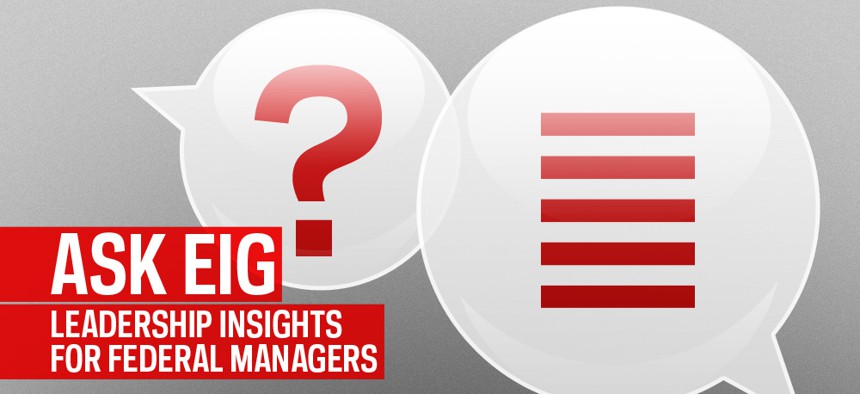Ask EIG: How Do I Create a Meaningful Strategic Plan?
Dear EIG: My management team recently discussed 'why we do what we do'-- turns out most of us don’t know...
![]()
Ask EIG is a partnership between Government Executive and the management experts at Brookings Executive Education.
Our management team recently discussed the issue of “why we do what we do,” and it turned out most of us don’t know the answer to that question. We also realized that our agency’s strategic plan does not help us make decisions about what we should do. What approach can you recommend to our agency (of about 400) so that our strategic plan is meaningful to all and useful for decision-making?
-Anonymous
When I consult for organizations, I sometimes give managers a pop quiz. I ask them to write down their organization’s strategy. All too often, fewer than 10 percent of the organization’s managers will come even close to accurately describing their strategy. Instead of the strategy they will recite the organization’s goals. Sometimes they state the mission while other times they describe the vision, occasionally mixing up the two. With such a mix of understandings it is no wonder that many organizations, like yours, face confusion about “why they do what they do.” I’ve found the confusion stems from three places:
Lengthy Strategic Planning Documents: Strategic plans, especially those found in government agencies, are responsible for at least some of this confusion. The agency plans I have read often run into the hundreds of pages making them difficult to fully understand and internalize—the human brain can acquire, accumulate, and apply only so much information from these encyclopedic tomes.
(HAVE A QUESTION? Send your most pressing management questions to AskEIG@govexec.com)
Too Many Strategies: Another source of confusion, especially for managers, arises when an organization (say the size of 400) has dozens of strategic initiatives running simultaneously. With so many initiatives it is difficult for anyone to understand all the strategic imperatives. And, as most people are pressed just to complete their day-to-day tasks, trying to juggle lots of initiatives on top of their “regular” job slows progress on any single initiative to a crawl, which gives rise to frustration, robs motivation, and shrivels productivity.
Strategy by Fiat: A third source of confusion comes from how most strategies are communicated. Often the strategy is conveyed from the top down with the message being repeated by the leader multiple times. Telling people what the strategy is—even when doing so frequently—rarely leads to the type of understanding needed by managers for the strategy to be useful for guiding their day-to-day decision-making.
Here are three ideas that might help you turn your situation around so that your strategic plan is meaningful and useful for decision-making.
- Simplify: First, simplify your strategy to no more than five strategic initiatives at a time. I like to think of a strategy as a solution approach—not the implementation details—for addressing important issues, seizing opportunities, or responding to vital problems. So your initiatives should reflect approaches to tackle issues instead of being defined by specific tactical details. Leave tactics up to the managers—that allows them to implement their own specific solutions.
- Verify: Second, “verify” understanding of the current strategic initiatives among your management team. While a pop quiz is one tool, verification can be achieved in a variety of ways. Try asking someone different in every management meeting to review the organization’s (five) strategic initiatives and explain what decisions they personally and recently have made to advance progress on the strategic initiatives. Doing so will focus attention not only on the initiatives but will cause your team to think much more about how their daily decisions relate to the initiatives.
- Incentivize Focus: Third, include progress on strategic initiatives in your agency’s performance review process. In addition to evaluating specific tasks associated with job descriptions, I like to ask every employee open-ended questions in their performance review about how they have contributed to advancing the current strategic initiatives and what they could have done better to advance them. Knowing that such questions will be in their review focuses attention on the strategy over the long term.
These ideas may not resolve all of your issues but I hope they give you a few ideas on how to head your agency down a path toward achieving greater meaning from your strategic plan and gaining more useful and coherent decision-making.
Duce a mente (May you lead by thinking),
Jackson Nickerson
In partnership with Brookings Executive Education, Excellence in Government is now taking, and answering, your most difficult management questions. Send your questions to AskEIG@govexec.com.




